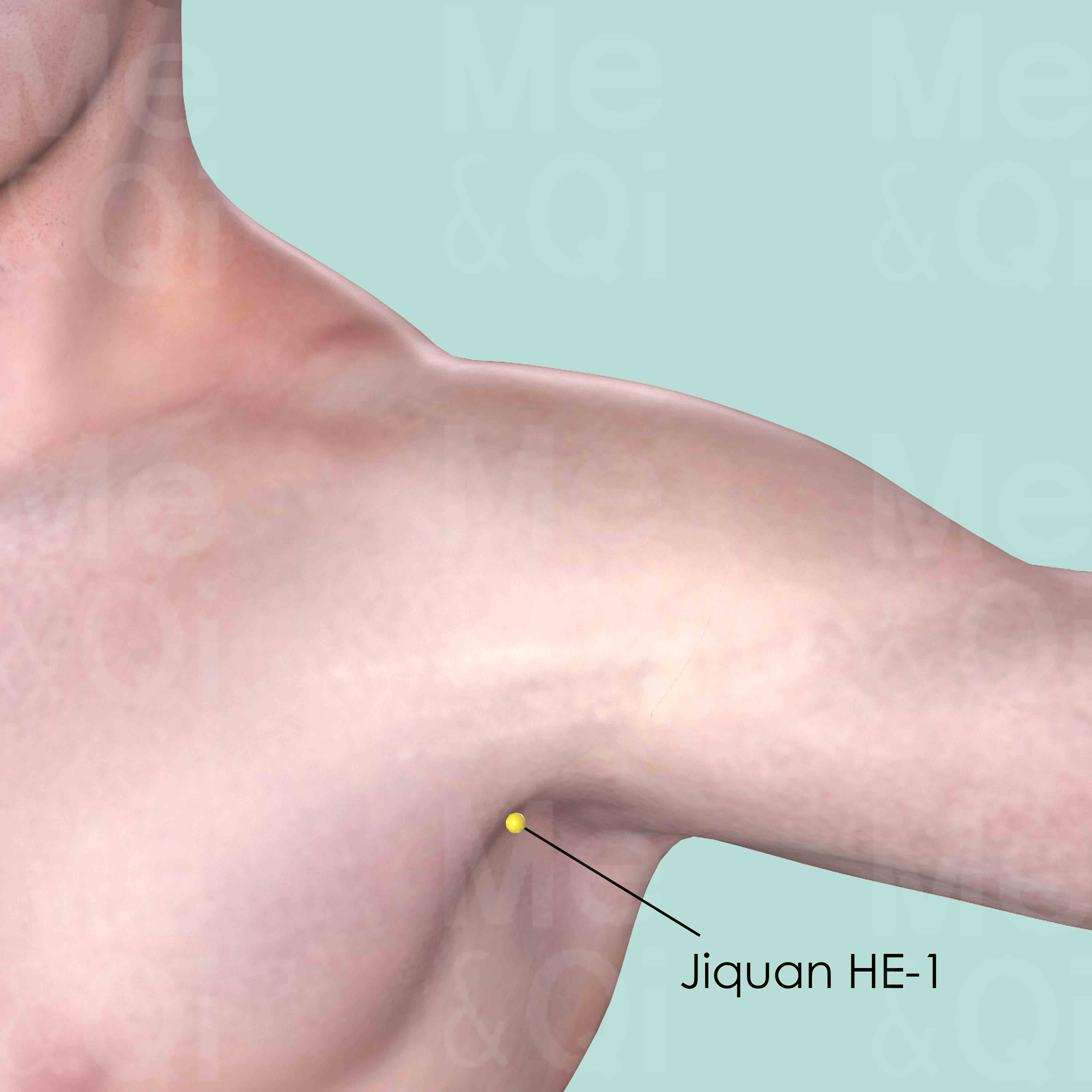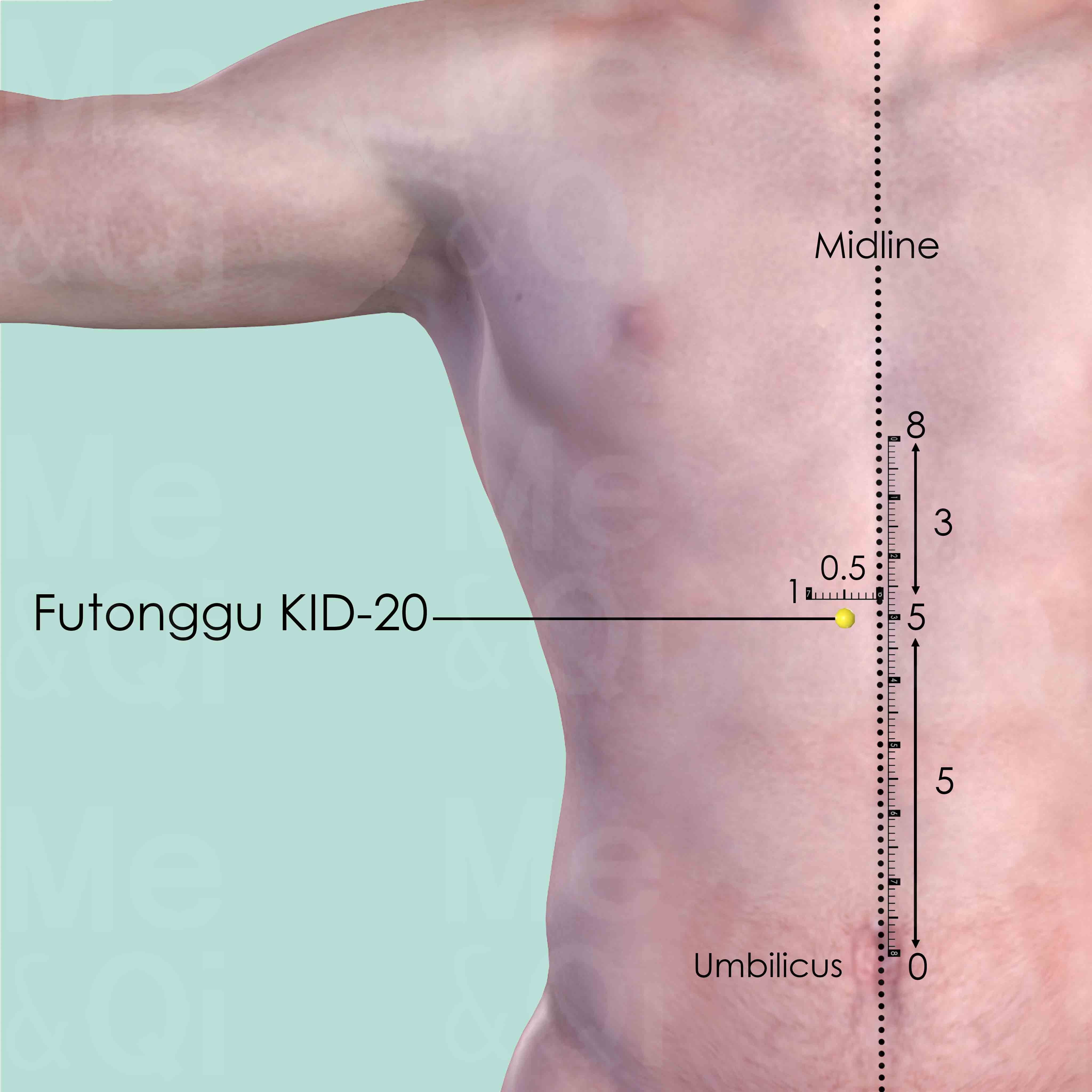Heart Painaccording to TCM
Symptom family: Chest & Hypochondriac Pain and Distention
Did you mean? Angina Chest Pain
Root Causes of Heart Pain in TCM
Explore below more details about what might cause Heart pain according to TCM.
- By Syndrome
- By Organ
- Blood Stasis
- Heart
Blood Stasis
Blood Stasis in TCM is a concept where the blood flow in the body is not as smooth or efficient as it should be. Imagine a river that's supposed to flow freely, but instead, it's getting blocked or moving too slowly in some parts. This can lead to various health issues, like pain that feels sharp or stabbing, dark bruises, and a complexion that looks purplish. TCM believes that good health relies on the smooth and vibrant flow of Qi and blood throughout the body, so when blood gets stuck, it's like a traffic jam in your body, leading to discomfort or health problems.... see more
Blood Stasis Patterns That Can Lead to Heart Pain
| Pattern Name | Relevant Symptoms | Relevant Formulas |
|---|---|---|
| Heart Vessel obstructed | Heart pain, Palpitations, Shortness of breath, Depression, Restlessness, Feeling of oppression of the chest, Chest pain, Sputum, Feeling of heaviness, Reluctance to speak, Cold extremities, Sighing, Purple lips, Purple nails, Purple face... see more | Xue Fu Zhu Yu Tang | Chai Hu Shu Gan San | Di Tan Tang | Dang Gui Si Ni Tang |
Heart
In TCM the Heart is considered the "emperor" of all organs, primarily responsible for governing Blood and housing the mind, known as "Shen." It plays a crucial role in maintaining mental-emotional equilibrium and controlling the circulation of Qi and blood throughout the body. When the Heart is imbalanced or malfunctions in TCM, it can lead to a range of issues like heart palpitations, insomnia, dream-disturbed sleep, anxiety, and a flushed complexion. Emotional disturbances such as excessive joy or lack of joy are also seen as signs of Heart disharmony. These symptoms reflect not just physical heart conditions but also the state of one's Shen, indicating the interconnectedness of physical and emotional well-being in TCM.... see more
Heart Patterns That Can Lead to Heart Pain
| Pattern Name | Relevant Symptoms | Relevant Formulas |
|---|---|---|
| Heart Vessel obstructed | Heart pain, Palpitations, Shortness of breath, Depression, Restlessness, Feeling of oppression of the chest, Chest pain, Sputum, Feeling of heaviness, Reluctance to speak, Cold extremities, Sighing, Purple lips, Purple nails, Purple face... see more | Xue Fu Zhu Yu Tang | Chai Hu Shu Gan San | Di Tan Tang | Dang Gui Si Ni Tang |
TCM Herbal Formulas for Heart Pain
Explore below some TCM herbal formulas used to address heart pain, organized by cause and by formula type.
- By Cause
- By Formula Type
- Blood Stasis
- Formulas that invigorate blood and dispel blood stagnation
- Formulas that promote qi movement
- Formulas that dispel phlegm
- Formulas that warm interior cold
Top Formula for Blood Stasis:
Xue Fu Zhu Yu Tang
Suitable for Blood Stasis patterns that may cause heart pain, such as Heart Vessel obstructed
Learn moreAll Formulas Recommended for Heart Pain Caused by Blood Stasis
| Formula | Patterns Suitable For |
|---|---|
| Xue Fu Zhu Yu Tang | Heart Vessel obstructed |
| Chai Hu Shu Gan San | Heart Vessel obstructed |
| Di Tan Tang | Heart Vessel obstructed |
| Dang Gui Si Ni Tang | Heart Vessel obstructed |
Formulas that invigorate Blood and dispel Blood Stagnation
These formulas are suitable for some heart pain-causing patterns like Heart Vessel obstructed.
One such formula is Xue Fu Zhu Yu Tang, with peach kernel as a key herb.
Formulas that promote Qi movement
These formulas are suitable for some heart pain-causing patterns like Heart Vessel obstructed.
One such formula is Chai Hu Shu Gan San, with bupleurum root as a key herb.
Formulas that dispel Phlegm
These formulas are suitable for some heart pain-causing patterns like Heart Vessel obstructed.
One such formula is Di Tan Tang, with arisaema as a key herb.
Formulas that warm Interior Cold
These formulas are suitable for some heart pain-causing patterns like Heart Vessel obstructed.
One such formula is Dang Gui Si Ni Tang, with dong quai as a key herb.
Acupoints for Heart Pain
Explore below some acupoints used to address heart pain, organized by meridian.
- By Meridian
- Bladder Channel
- Pericardium Channel
- Heart Channel
- Spleen Channel
- Kidney Channel
- Triple Burner Channel
- Directing Vessel
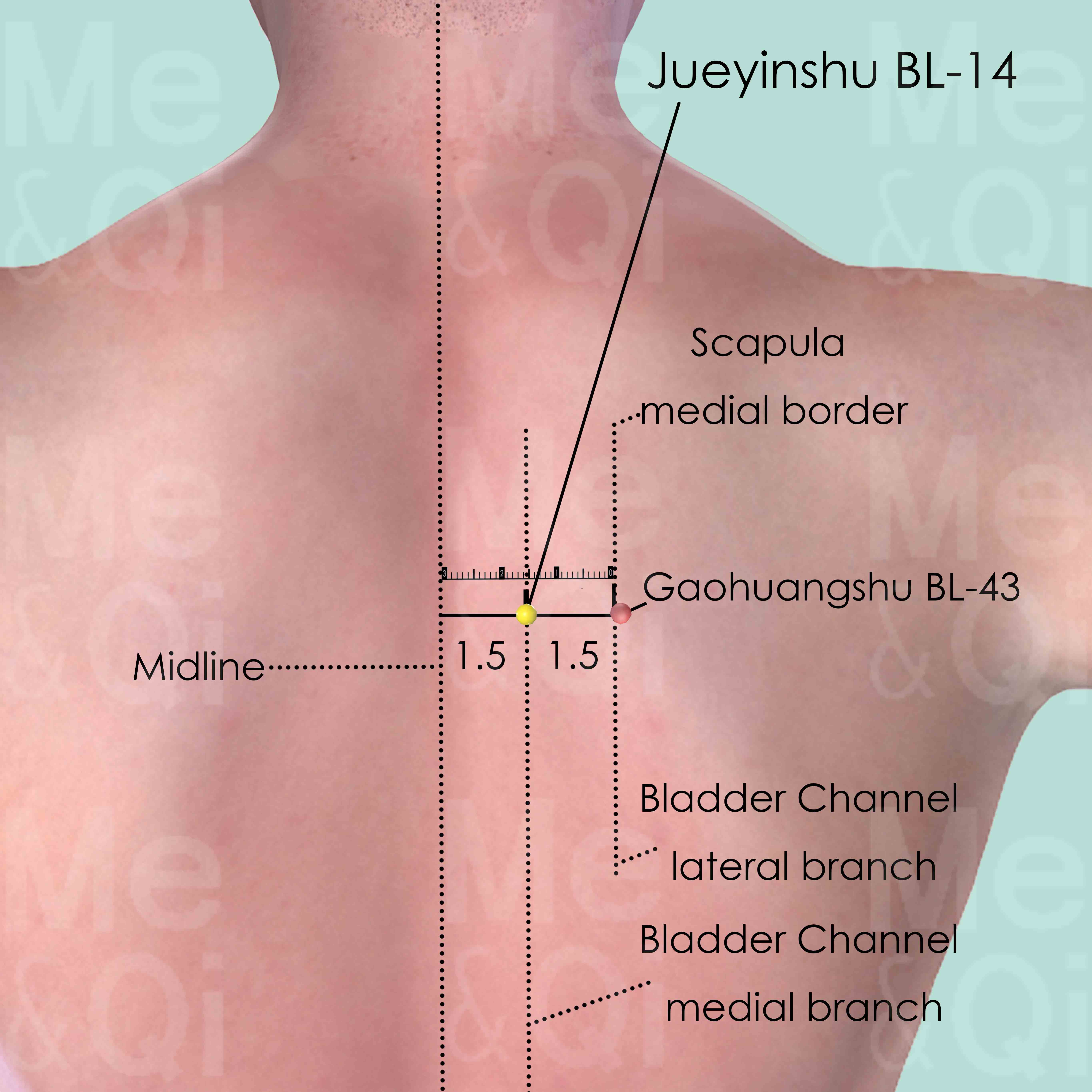
Jueyinshu BL-14
1.5 cun lateral to the lower border of the spinous process of the 4th thoracic vertebra (T4).
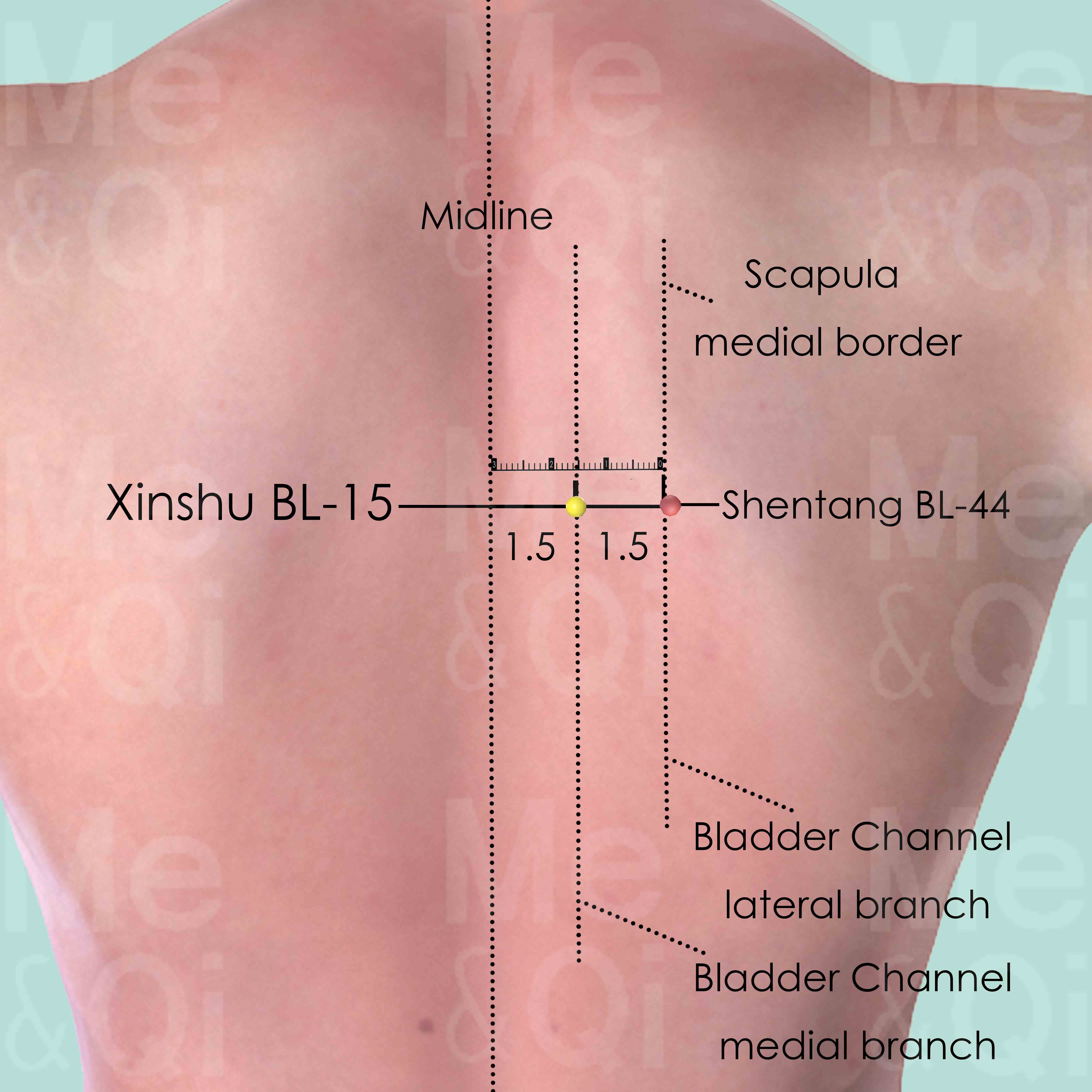
Xinshu BL-15
1.5 cun lateral to the lower border of the spinous process of the 5th thoracic vertebra (T5).
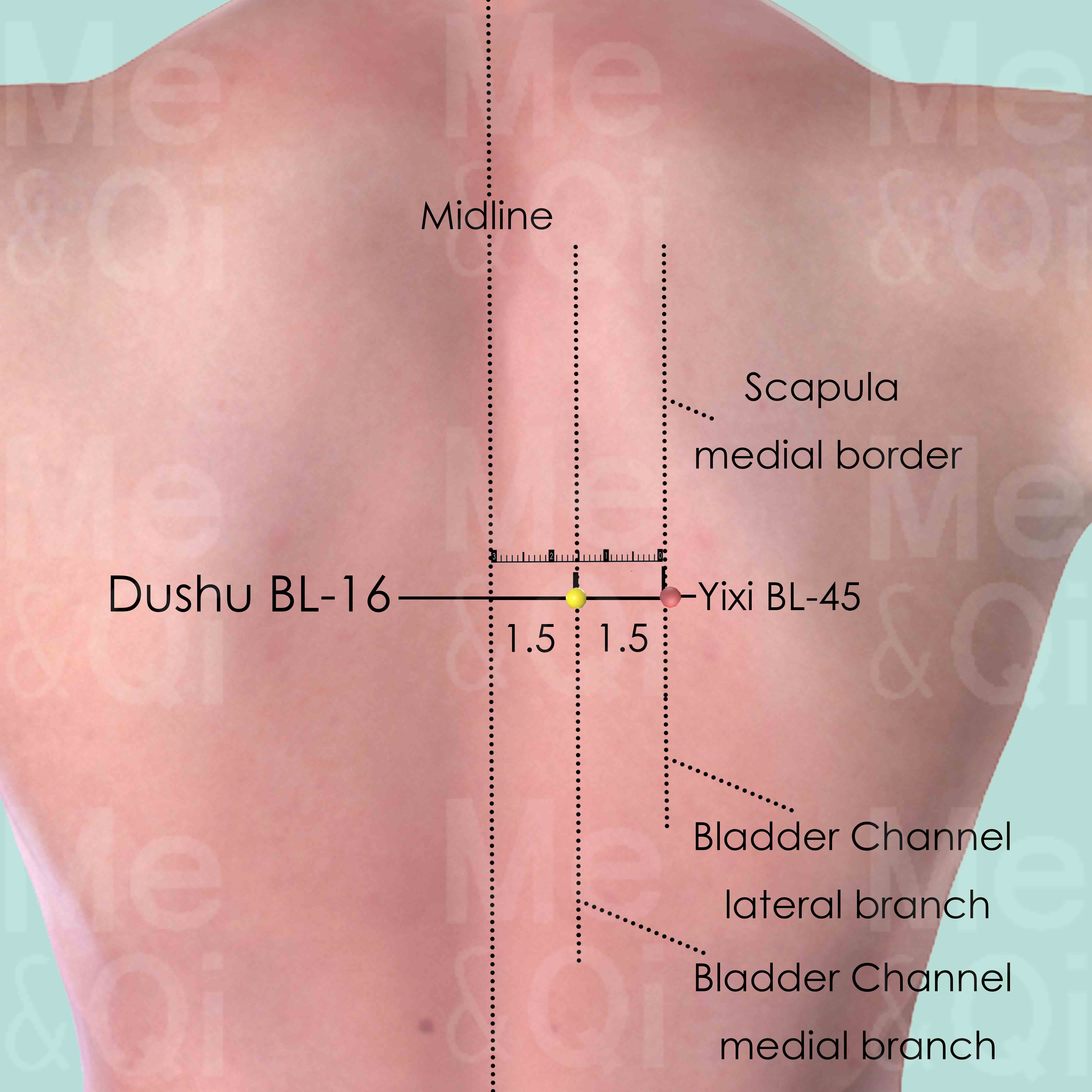
Dushu BL-16
1.5 cun lateral to the lower border of the spinous process of the 6th thoracic vertebra (T6).
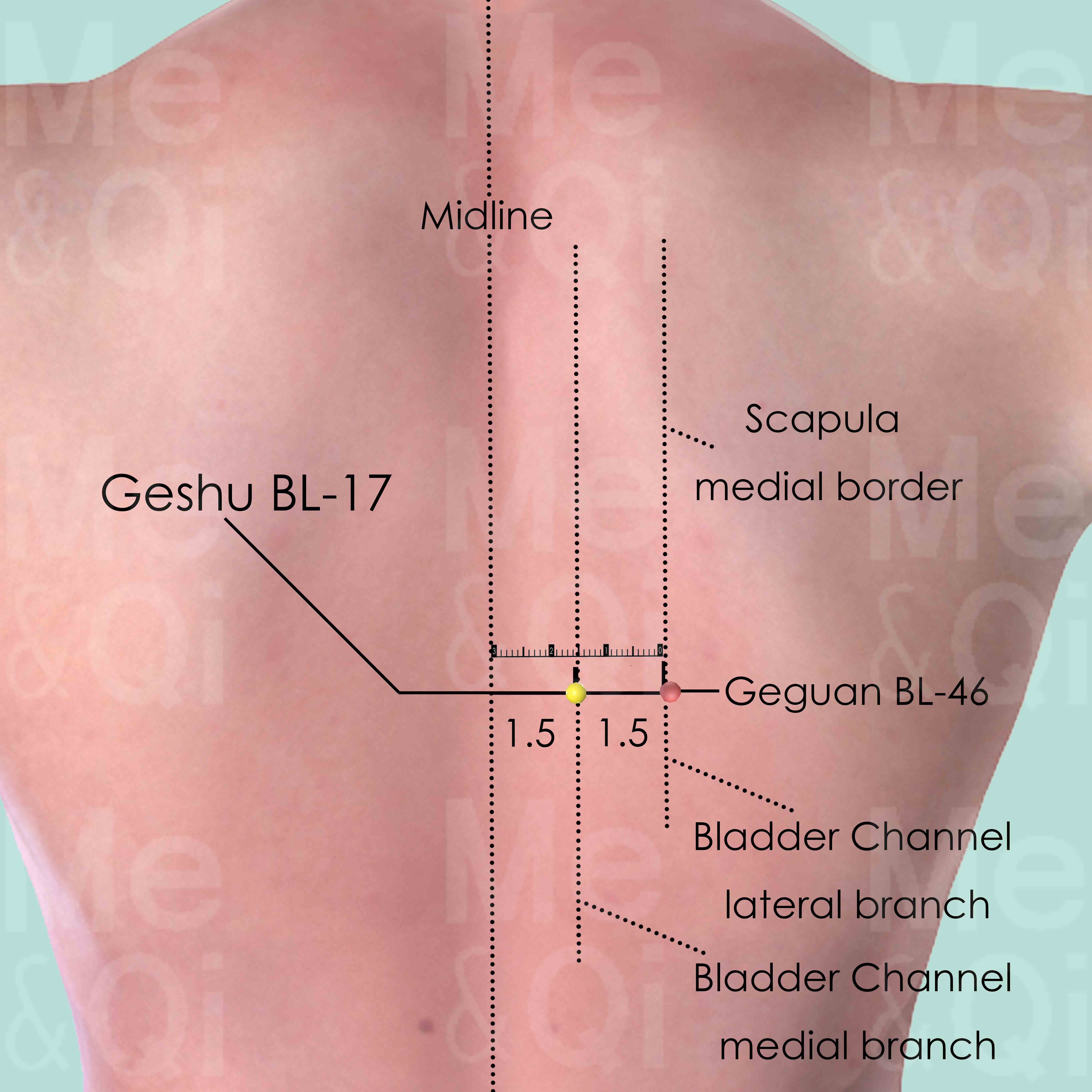
Geshu BL-17
1.5 cun lateral to the lower border of the spinous process of the 7th thoracic vertebra (T7).
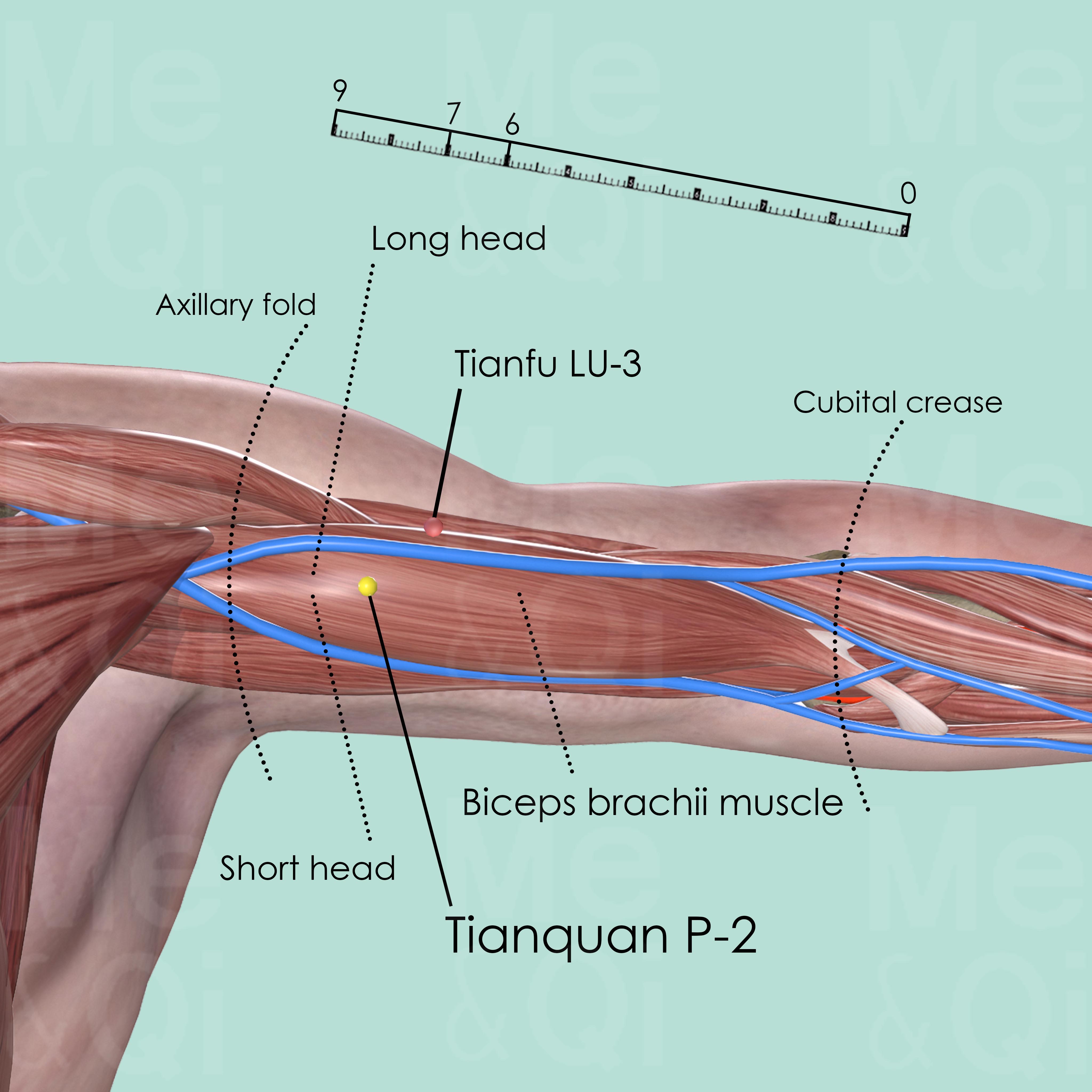
Tianquan P-2
2 cun below the end of the anterior axillary fold, between the two heads of biceps brachii muscle.
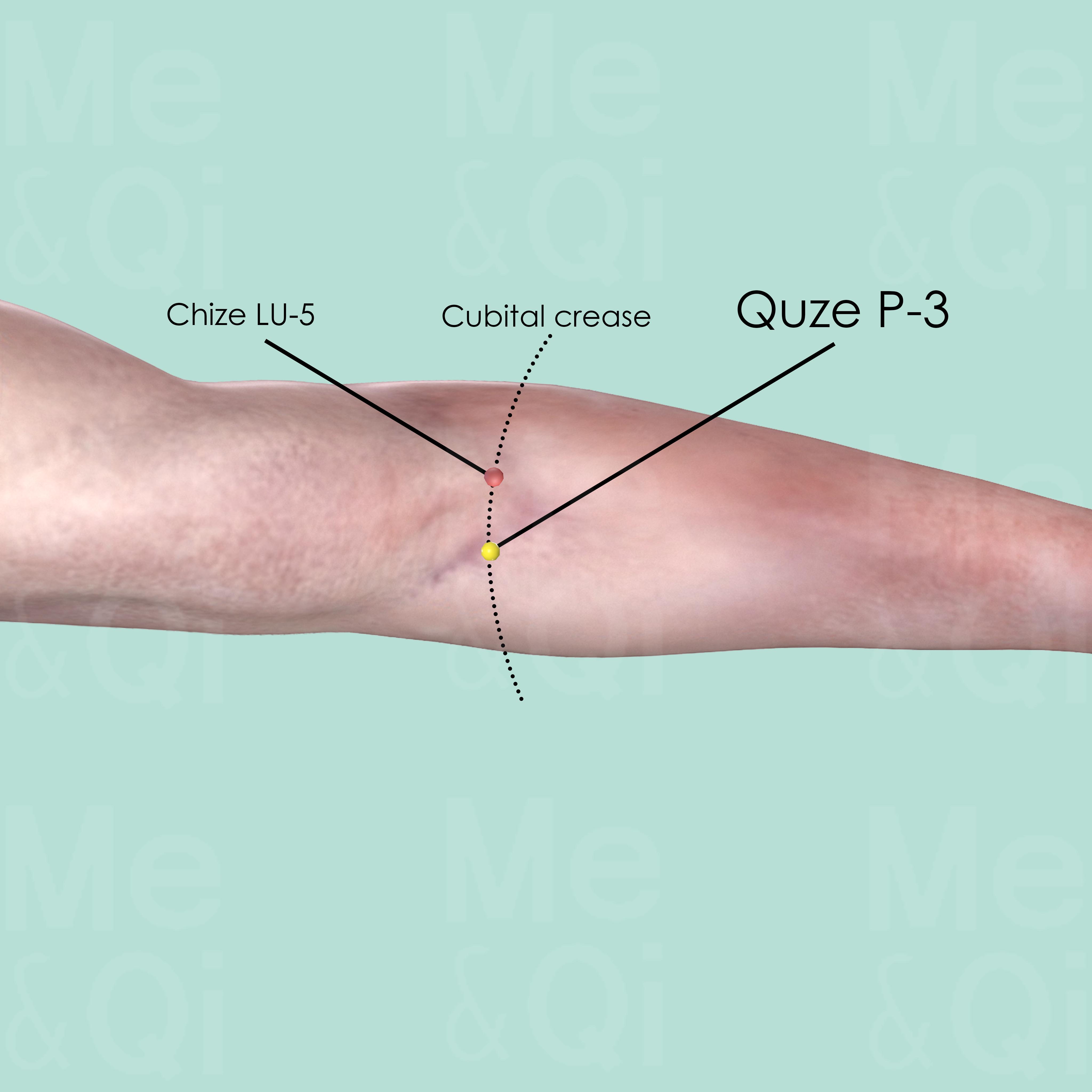
Quze P-3
On the transverse cubital crease, at the ulnar side of the tendon of biceps brachii muscle.
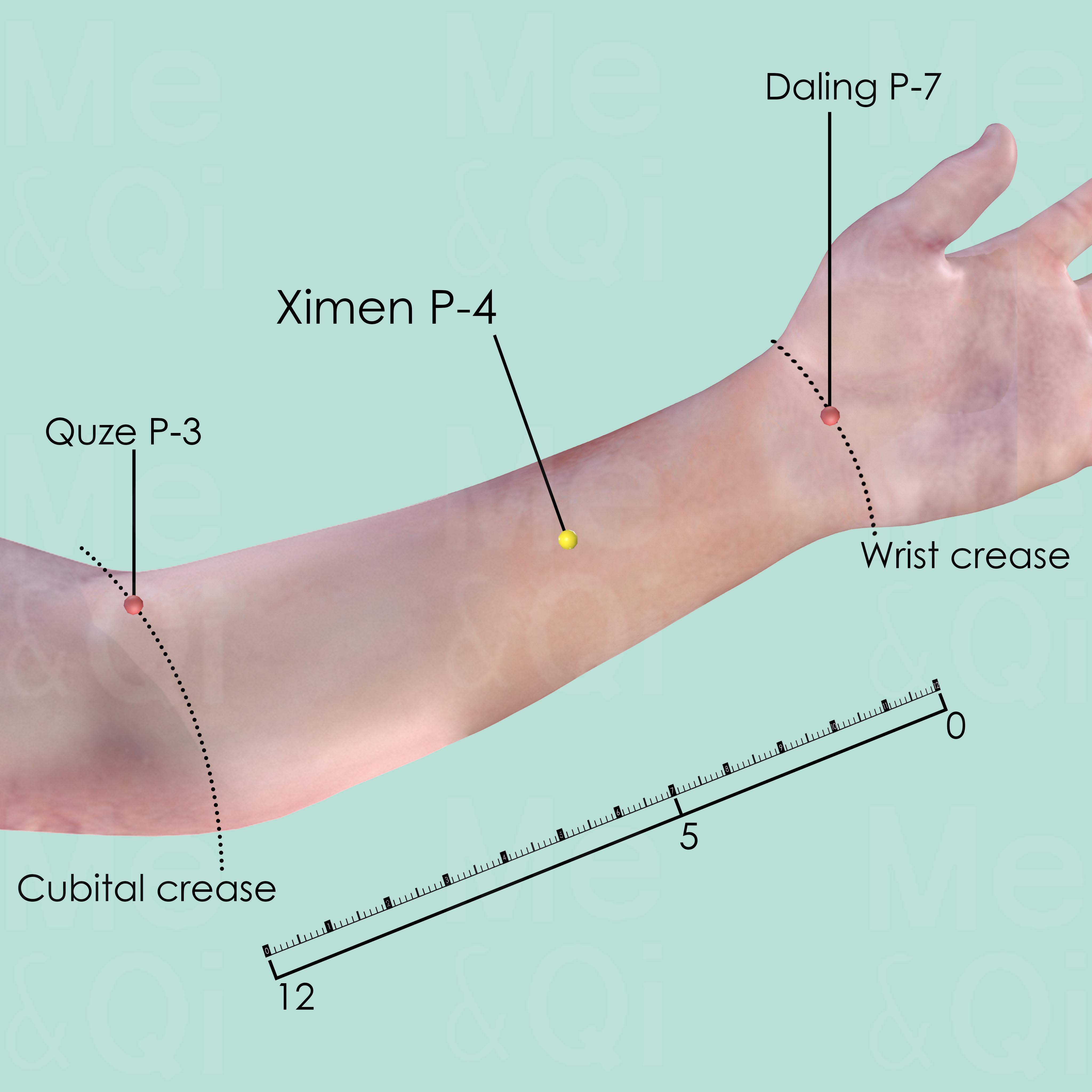
Ximen P-4
5 cun above the transverse crease of the wrist, on the line connecting Quze P-3 and Daling P-7, between the tendons of palmaris longus and flexor carpi radialis muscles.
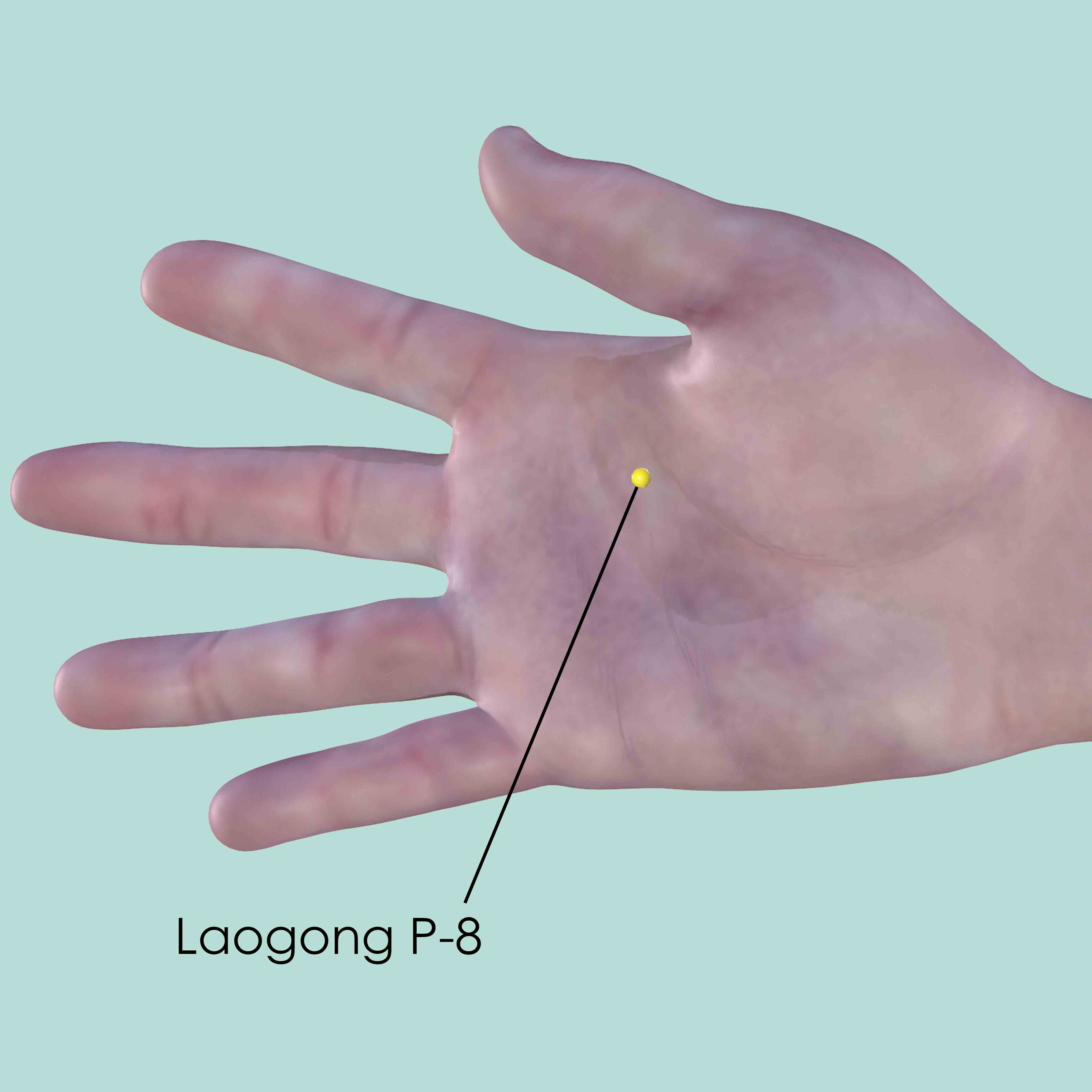
Laogong P-8
In the center of the palm, between the 2nd and the 3rd metacarpal bones, proximal to the metacarpophalangeal joint.
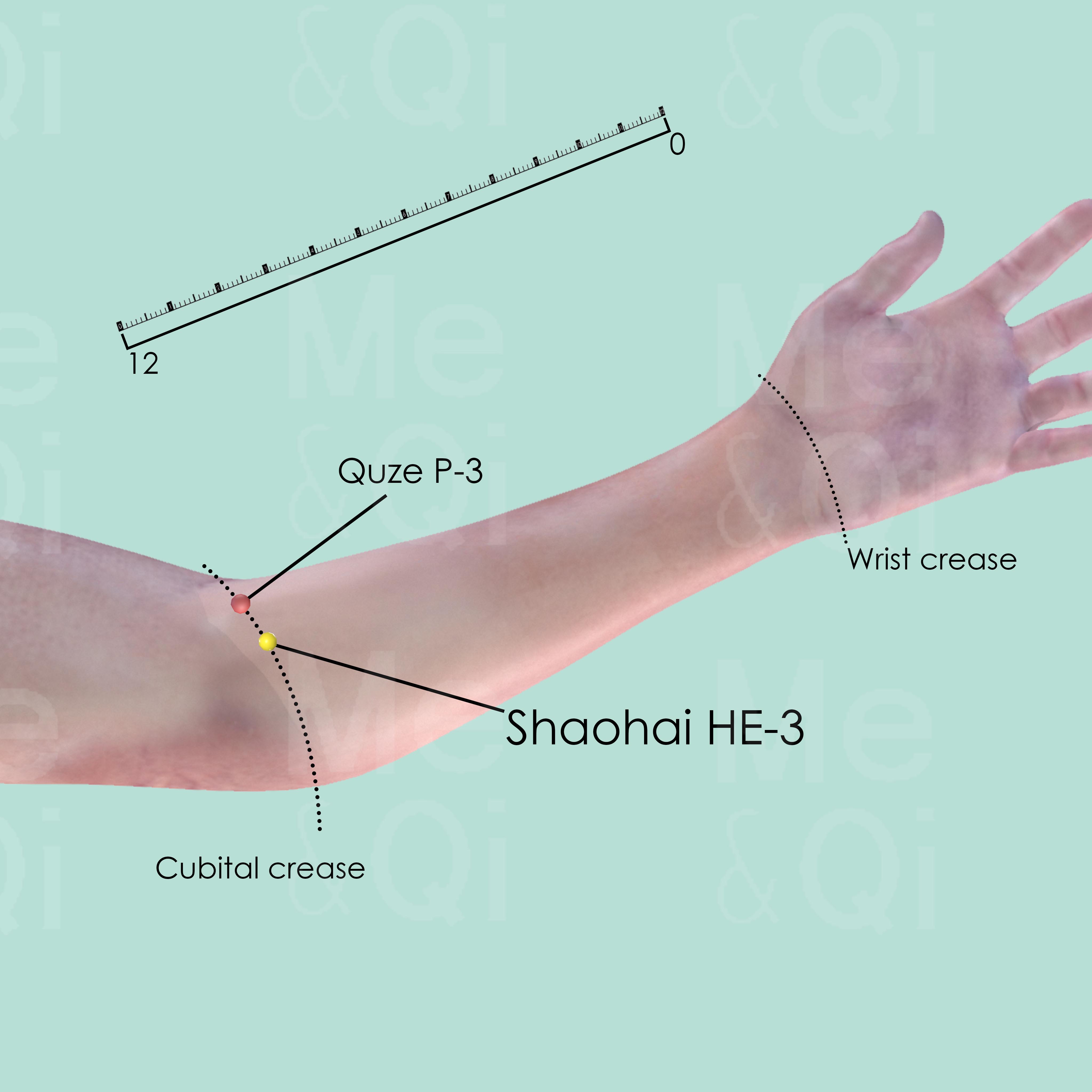
Shaohai HE-3
When the elbow is flexed slightly, Shaohai HE-3 is at the medial end of the transverse cubital crease, in the depression radius to the medial epicondyle of the humerus.
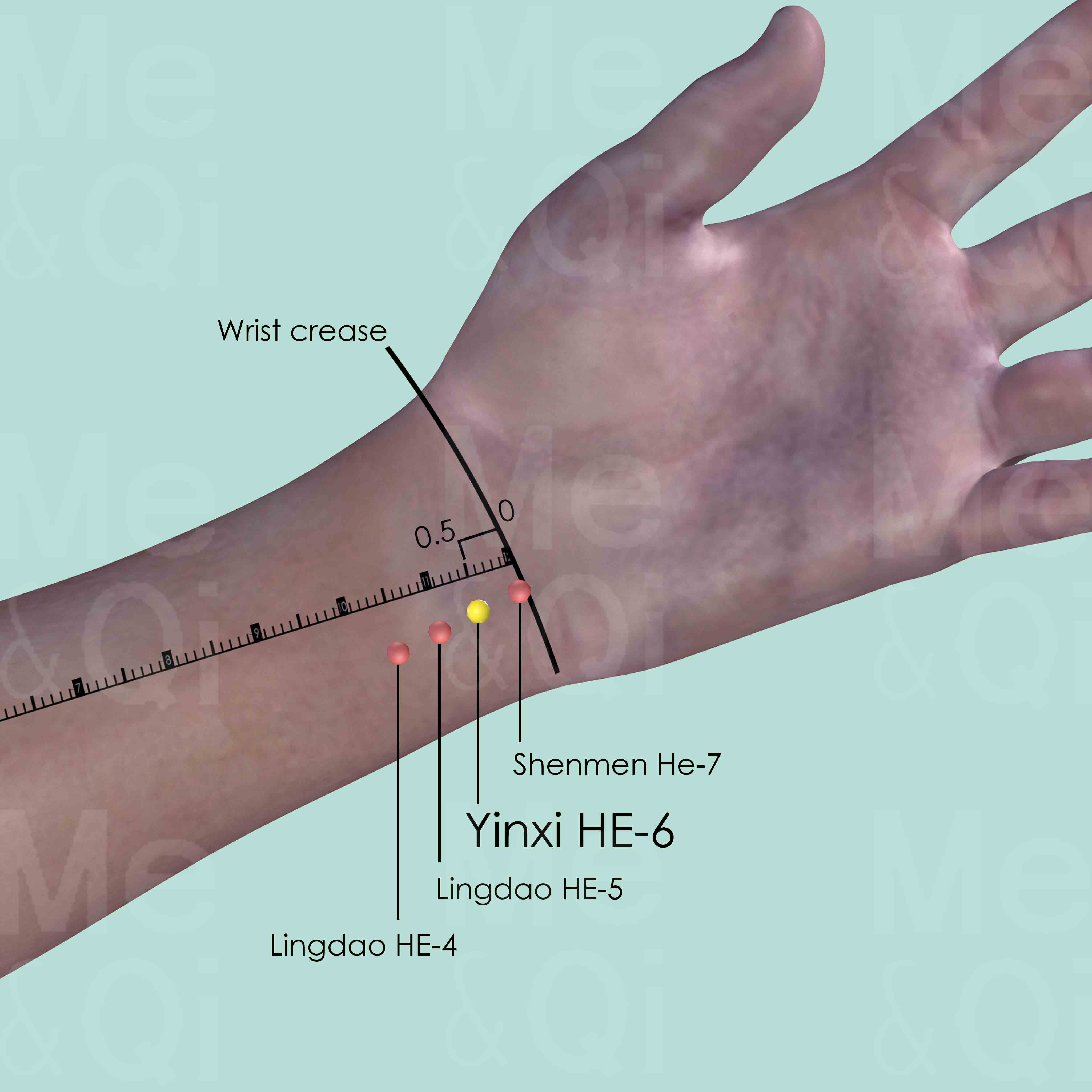
Yinxi HE-6
On the radial side of the tendon of flexor carpi ulnaris muscle, 0.5 cun above the transverse crease of the wrist when the palm faces upward.
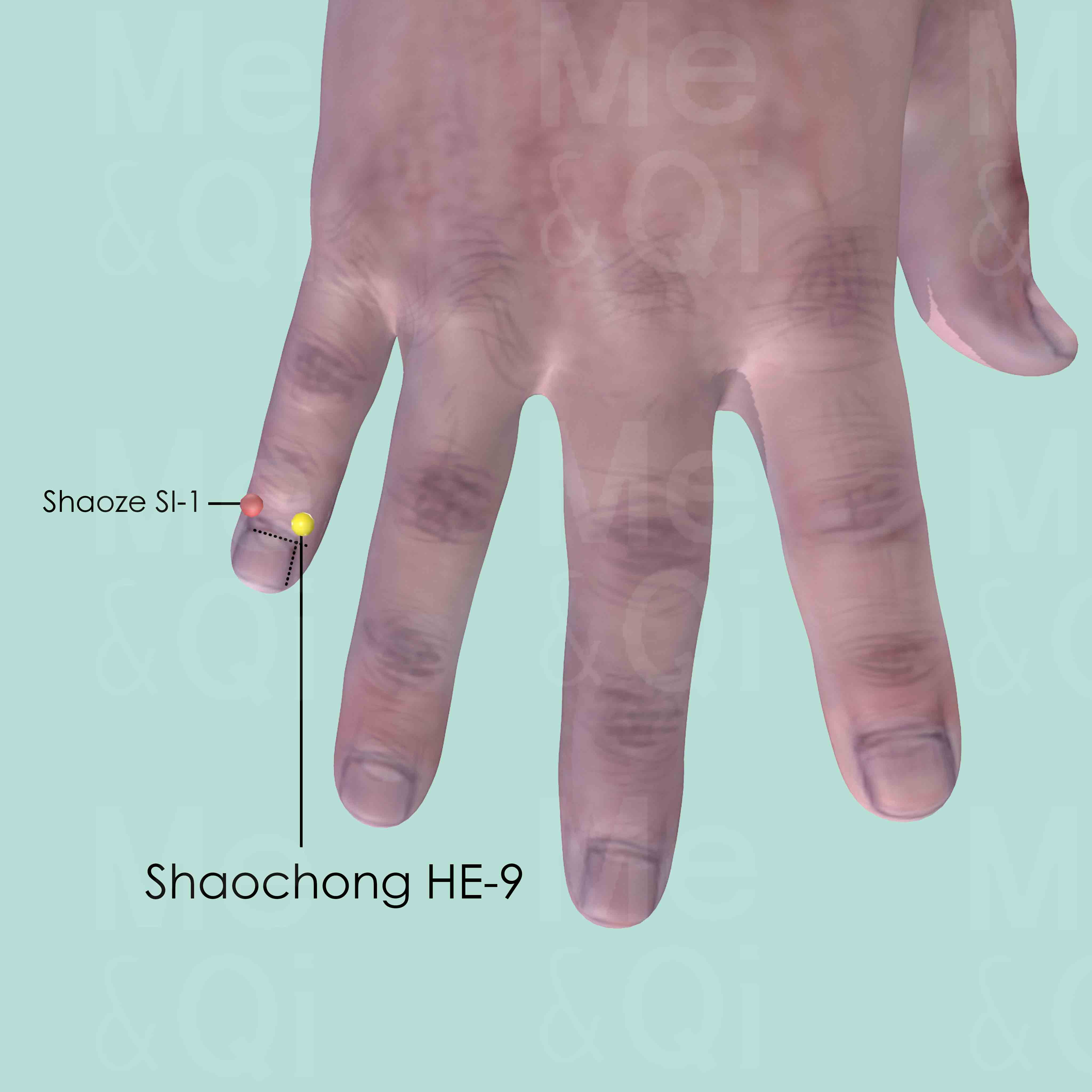
Shaochong HE-9
On the radial side of the little finger, about 0.1 cun posterior to the corner of the nail.
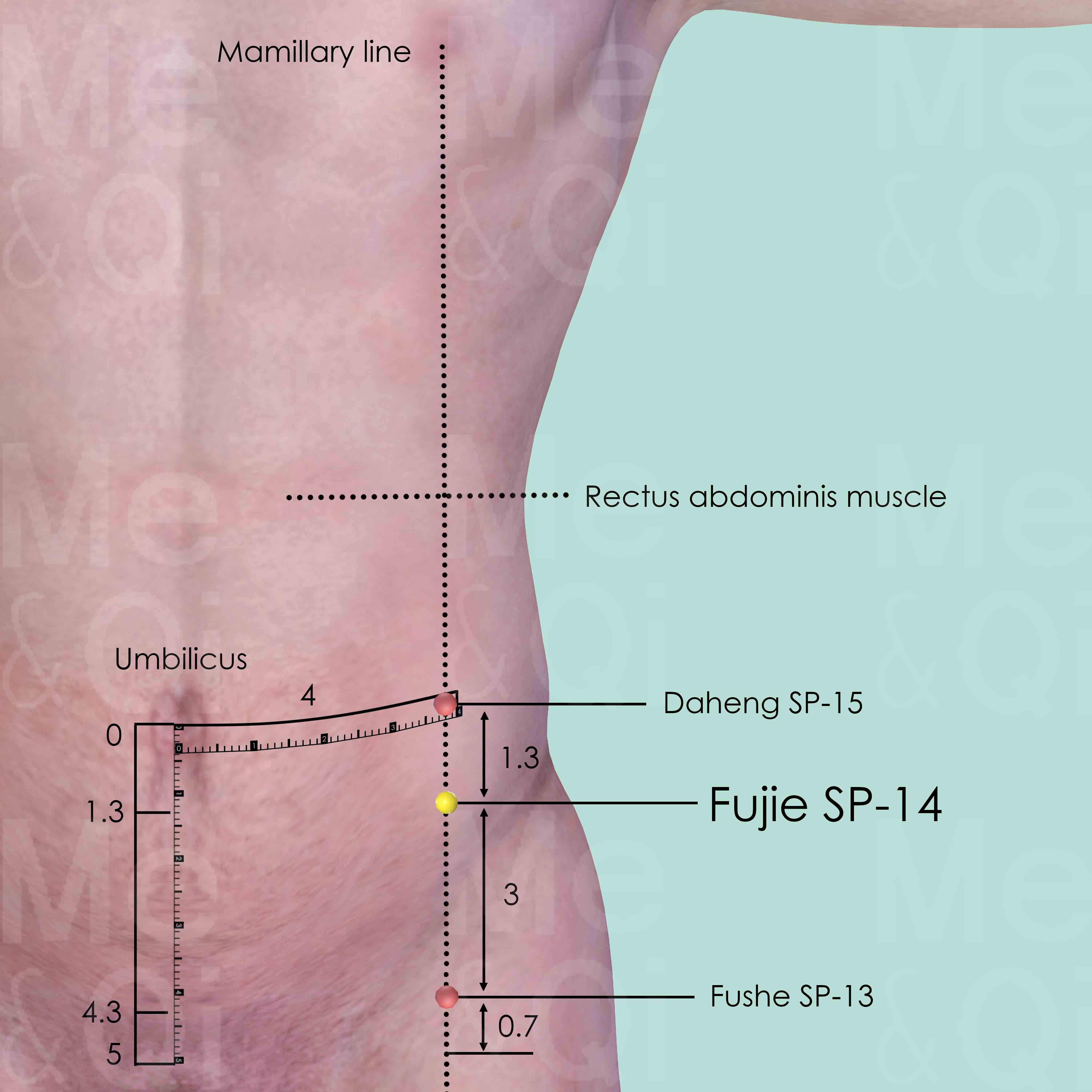
Fujie SP-14
On the mamillary line which is 4 cun lateral to the anterior midline. 3 cun above Fushe SP-13, 1.3 cun below Daheng SP-15, on the lateral side of rectus abdominis muscle.
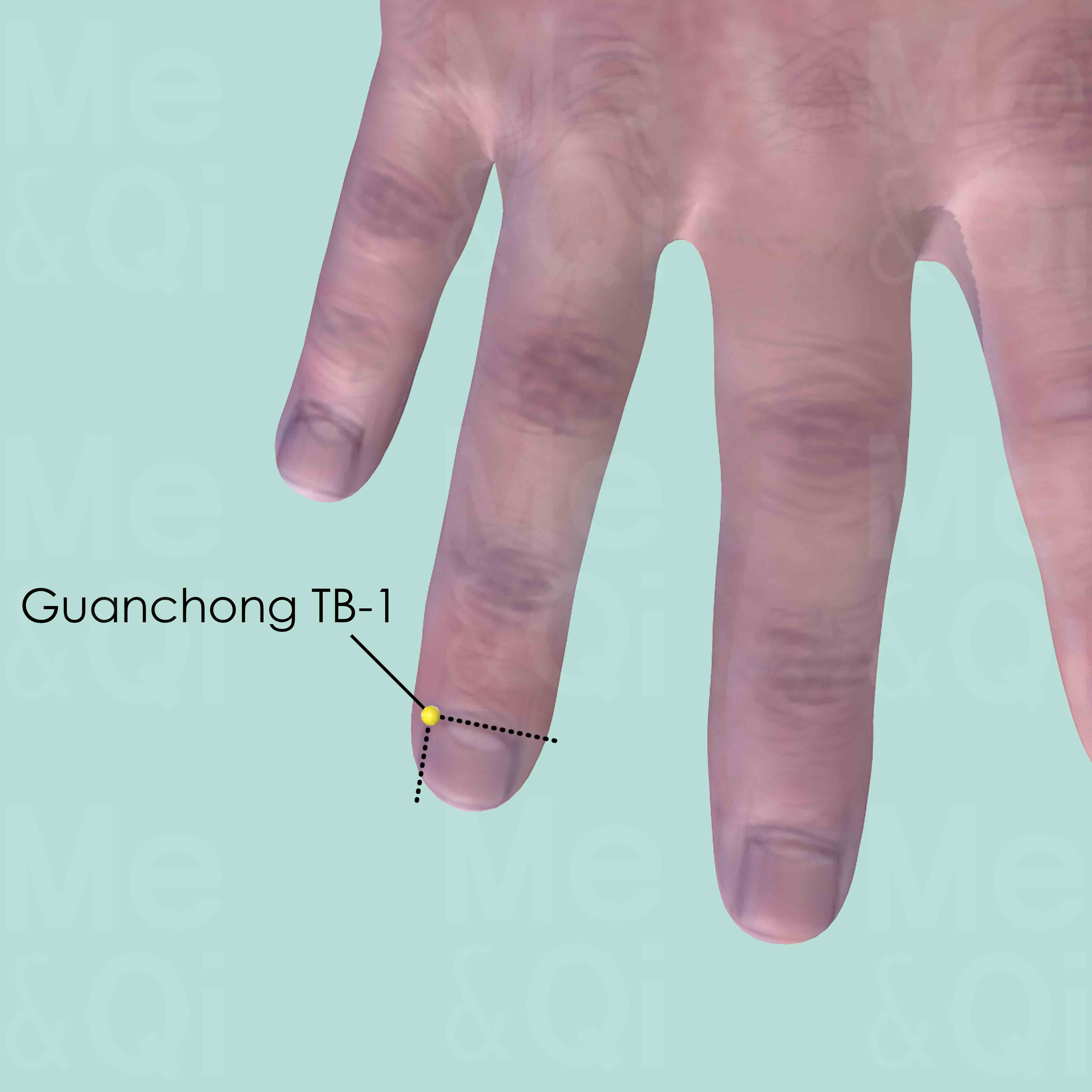
Guanchong TB-1
On the lateral side of the ring finger, about 0.1 cun posterior to the corner of the nail.
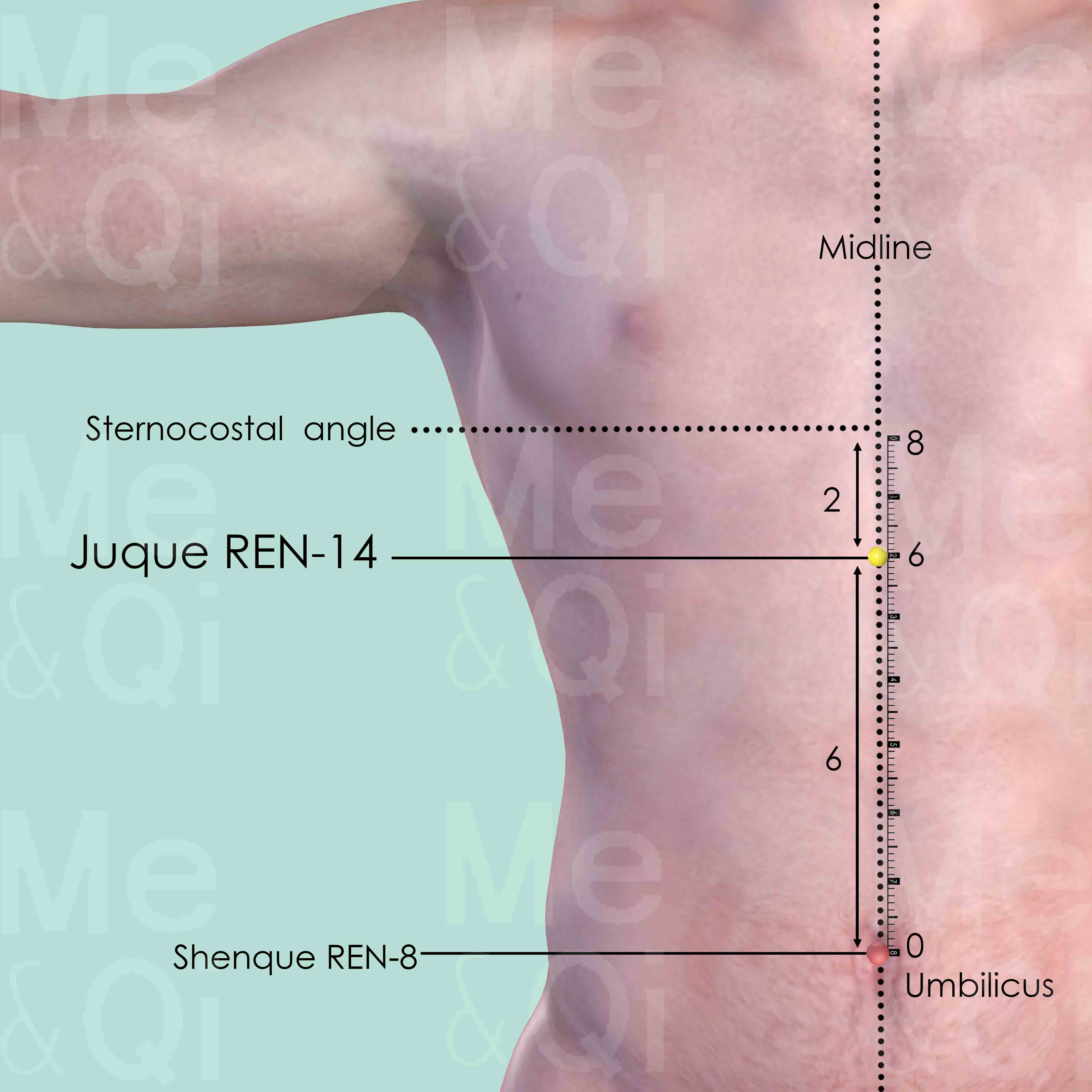
Juque REN-14
On the midline of the abdomen, 6 cun above the umbilicus and 2 cun below the sternocostal angle.

